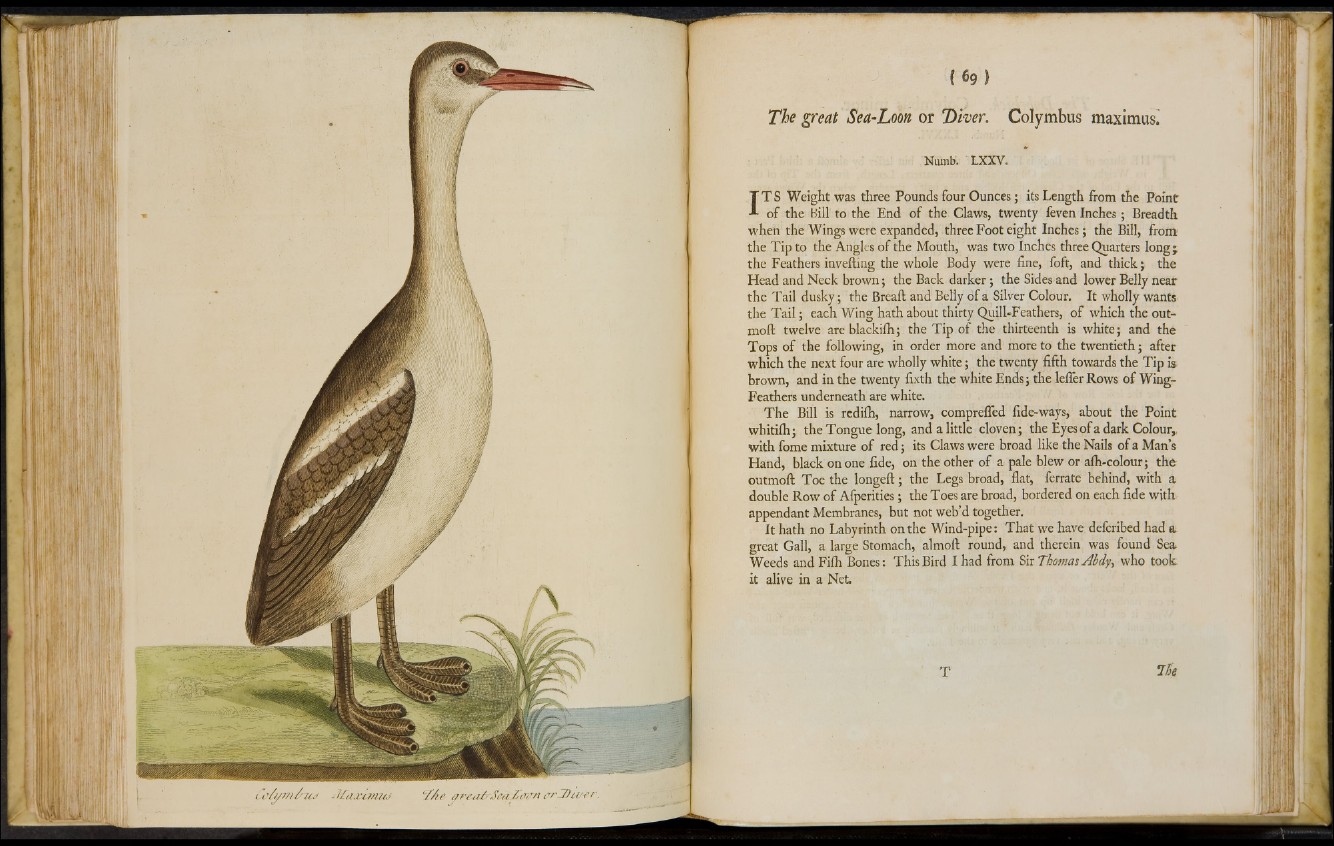
The great Sea-Loon or ‘Diver. Colymbus maximus.
Numb. LXXV.
IT S Weight was three Pounds four Ounces; its Length from the Point
of the Bill to the End of the Claws, twenty feven Inches; Breadth
when the Wings were expanded, three Foot eight Inches; the Bill, from
the Tip to the Angles of the Mouth, was two Inches three Quarters long j
the Feathers inverting the whole Body were fine, foft, and thick; the
Head and Neck brown; the Back darker; the Sides and lower Belly near
the Tail dusky; the Breaft and Belly of a Silver Colour. It wholly wants
the Tail; each Wing hath about thirty Quill-Feathers, of which the out-
moft twelve areblackiih; the Tip of the thirteenth is white; and the
Tops of the following, in order more and more to the twentieth; after
which the next four are wholly white; the twenty fifth towards the Tip is
brown, and in the twenty fixth the white Ends; the lefler Rows of Wing-
Feathers underneath are white.
The Bill is rcdiih, narrow, comprefled fide-ways, about the Point
whitifh; the Tongue long, and a little cloven; the Eyes of a dark Colour,,
with fome mixture of red; its Claws were broad like the Nails of a Mans
Hand, black on one fide, on the other of a pale blew or afh-colour; the
outmoft Toe the longeft; the Legs broad, flat, ferrate behind, with a
double Row of Afperities; the Toes are broad, bordered on each fide with
appendant Membranes, but not web’d together.
It hath no Labyrinth on the Wind-pipe: That we have defcribed had a
great Gall, a large Stomach, almoft round, and therein was found Sea
Weeds and Fiih Bones: This Bird I had from Sir Thomas Abdy, who took
it alive in a Net.